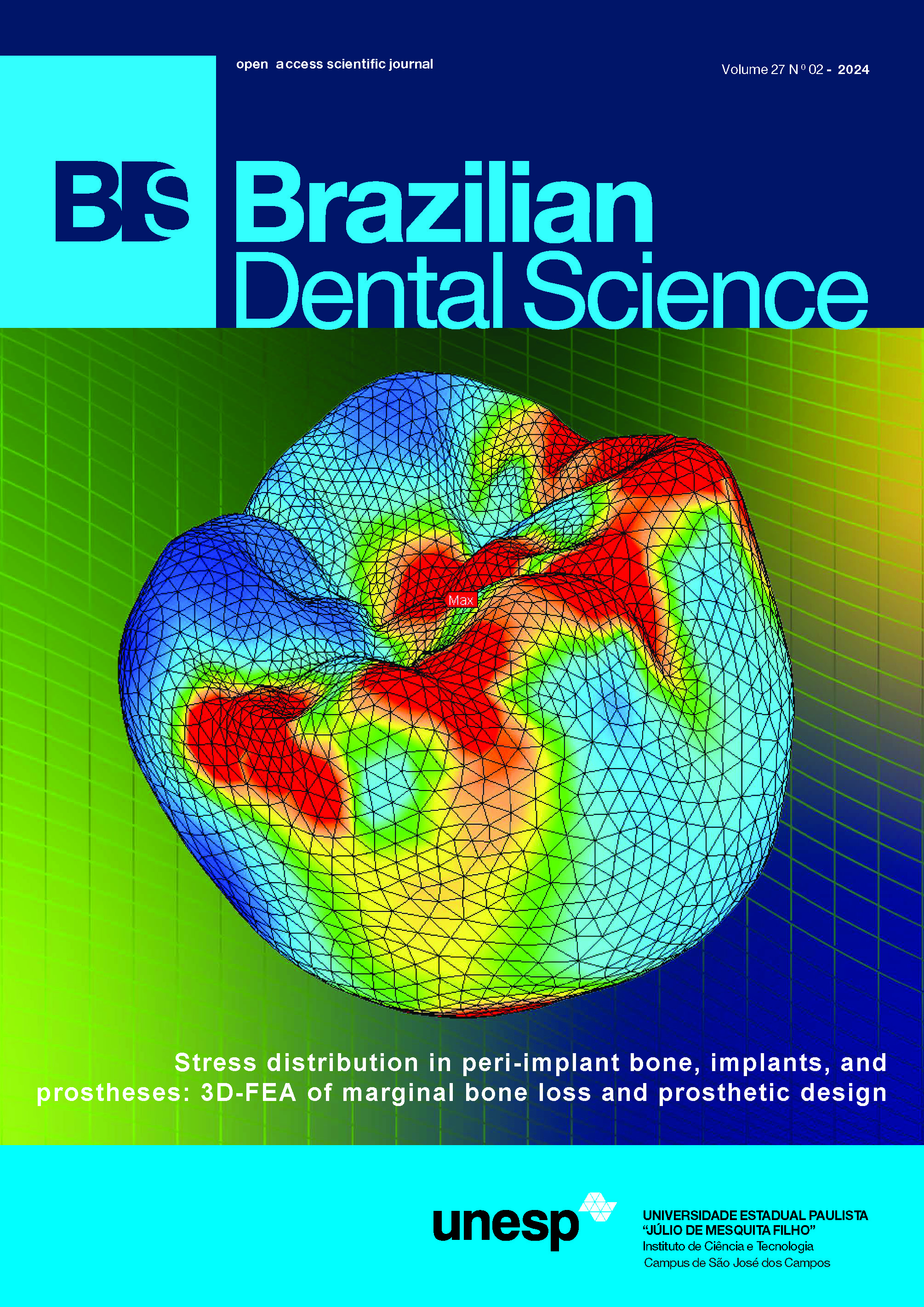Rebonding strengths of lithium disilicate and feldspathic veneers debonded by Er,Cr:YSGG laser
DOI:
https://doi.org/10.4322/bds.2024.e4275Resumo
Objective: The aim of this study is to identify the shear bond strength of rebonded CAD/CAM laminates made of lithium disilicate or feldspathic ceramics after debonding using Er,Cr:YSGG lasers. Material and Methods: Eighty bovine teeth (N=80) were used as a bonding substrate, which were divided into four main groups (20 each) according to the ceramic material and cement-curing mode used as follows: Group AL: lithium disilicate (IPS E.max) with light-cured resin cement, Group AD: lithium disilicate (IPS E.max) with dual-cured resin cement, Group BL: feldspathic porcelain (VITA MARK II) with light-cured resin cement, and Group BD: feldspathic porcelain (VITA MARK II) with dual-cured resin cement. Half the number of each subgroup (n=10/subdivisions) were tested for their shear bond strength without debonding, while the other half of the specimens were tested after Er,Cr:YSGG laser debonding and rebonding. A three-way ANOVA test was used to study the effect of ceramic and curing on shear bond strength. Bonferroni’s post-hoc test was used for pairwise comparisons when the ANOVA test was significant. Results: After rebonding and using the light-cure mode, there was no statistically significant difference between the mean shear bond strength of the two ceramics (P-value = 0.065). However, after rebonding and using the dual-cured mode, E.max showed significantly lower shear bond strength than VITA (P-value < 0.001). Conclusion: Ceramic type, the cement’s curing mode, and rebonding after laser irradiation all had a significant effect on the mean shear bond strength.
KEYWORDS
Ceramic veneers; Debonding; Er,Cr: YSGG; Feldspathic; Laser.
Downloads
Downloads
Publicado
Como Citar
Edição
Seção
Licença
TRANSFERÊNCIA DE DIREITOS AUTORAIS E DECLARAÇÃO DE RESPONSABILIDADE
Toda a propriedade de direitos autorais do artigo "____________________________________________________________________" é transferido do autor(es) para a CIÊNCIA ODONTOLÓGICA BRASILEIRA, no caso do trabalho ser publicado. O artigo não foi publicado em outro lugar e não foi submetido simultaneamente para publicação em outra revista.
Vimos por meio deste, atestar que trabalho é original e não apresenta dados manipulados, fraude ou plágio. Fizemos contribuição científica significativa para o estudo e estamos cientes dos dados apresentados e de acordo com a versão final do artigo. Assumimos total responsabilidade pelos aspectos éticos do estudo.
Este texto deve ser impresso e assinado por todos os autores. A versão digitalizada deverá ser apresentada como arquivo suplementar durante o processo de submissão.




























